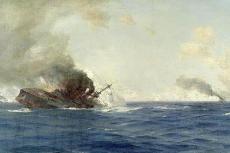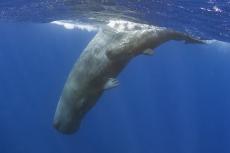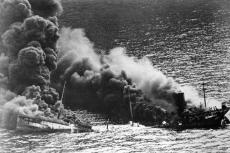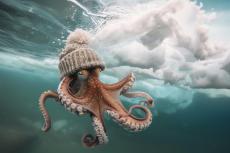Wreck of Famed WWI Heavy Cruiser SMS Scharnhorst Discovered off Falklands
Wreckage of German WWI battlecruiser SMS Scharnhorst is discovered off the Falkland Islands 105 years after it was sunk by the British warships HMS Invincible and HMS Inflexible in crucial battle
The wreck of the German battlecruiser SMS Scharnhorst, sunk by the Royal Navy during the First World War with the loss of all her crew and Admiral Graf von Spee has been found in the South Atlantic. SMS Scharnhorst, the flagship of the East Asia Squadron which was once the scourge of the Royal Navy, went down with most of the rest of the formation on December 8, 1914, in the Battle of the Falkland Islands.
The battlecruiser sank on Dec. 8, 1914, with more than 800 crew members on board, including German Adm. Maximilian Graf von Spee.
The Scharnhorst had tried to lead a naval attack on the Falklands, but the German squadron was surprised by a larger force of British warships. During the resulting Battle of the Falkland Islands, the British sank the Scharnhorst along with eight other German warships.
The Battle of the Falkland Islands followed the Battle of Coronel, fought off the coast of Chile in November 1914, where Graf von Spee's fleet overpowered the Royal Navy and in which 1600 British sailors perished. A month later a British squadron under the command of Vice-Admiral Doveton Sturdee, pursued, engaged and defeated Graf von Spee's squadron, comprising the Scharnhorst, Gneisenau, Nürnberg and Leipzig.
The action was particularly important because as a consequence of the battle, the German East Asia Squadron, Germany's only permanent overseas naval formation, effectively ceased to exist, bringing an end to commerce raiding by German warships.
Found!
Sitting upright on the seabed about 100 miles southeast of Port Stanley, some 1,600 metres (5,280ft) down, the Scharnhorst was discovered by marine archaeologist Mensun Bound, the first success in a search by the Falklands Maritime Heritage Trust to locate the warship.

The Falkland Maritime Heritage Trust is now seeking to have the site formerly protected in law. The wreck was not touched or in any way disturbed during the operation. The team onboard Seabed Constructor conducted an act of remembrance at the site, commemorating all who died during the Battle.
“The moment of discovery was extraordinary,” said Mr Bound. “We are often chasing shadows on the seabed, but when the Scharnhorst first appeared in the data flow, there was no doubt that this was one of the German fleet. You could even see the impact crater. We sent down a remotely-operated vehicle to explore and almost straight away we were into a debris field that said ‘battle’. Suddenly she just came out of the gloom with great guns poking in every direction."
"Speaking as one of the many families affected by the heavy casualties suffered on 8 December 1914 at the Battle of the Falkland Islands, the discovery of SMS Scharnhorst is bittersweet. We take comfort from the knowledge that the final resting place of so many has been found, and can now be preserved, whilst also being reminded of the huge waste of life.
As a family we lost a father and his two sons on one day. Like the thousands of other families who suffered unimaginable loss during the First World War, we remember them and must ensure that their sacrifice was not in vain."
Wilhelm Graf von Spee, head of the Graf von Spee family



















































